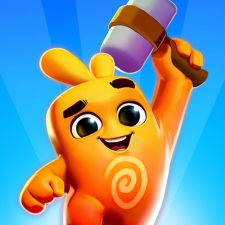Having a great game is one thing, but keeping it alive and profitable is another. Players have so much choice in the mobile market that the challenge becomes holding their attention, or risk losing them forever.
Events can not only play a big part in keeping content fresh for older players, but can also bring in new ones while increasing overall player engagement, for both. And the longer they engage the more they are likely to spend.
So what does a dream event look like? Here, Gradient Universe founder Oxana Fomina shares just how powerful a good in-game event can be by diving into the story of how one event from Dice Dreams then rippled through various other titles, such as Monopoly GO, boosting engagement and monetisation on the way.
In March 2023, the game Dice Dreams introduced a pet-themed event that significantly boosted the game's financial performance. This event led to a 43% increase in the game's revenue, while the average number of player sessions grew by 15% throughout the event's 34-day duration. The remarkable success of this event caught the attention of various gaming studios, prompting several of them to implement a similar event in their own games. This article will explore how the pet event was adapted by five top games in 2023 and the outcomes of these adaptations.
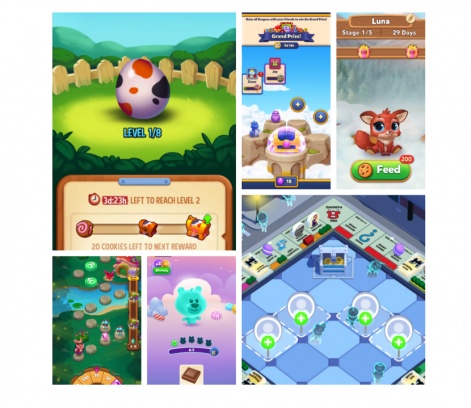
The table below highlights the performance of various gaming events, showcasing the event release date, the percentage increase in revenue, and the event duration. Source: Playliner
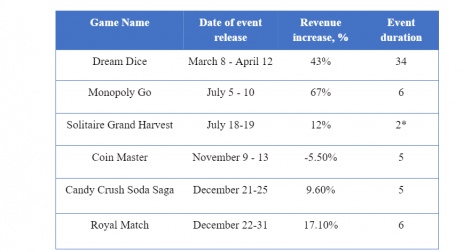
Note: *Event duration. The first time the event lasted for two days, in subsequent launches of the event, the duration was 28 days or more. Revenue increase is calculated as the percentage by which revenue changed during the days of the event compared to a similar period of time before the event. Source: Sensor Tower
The standout event is Monopoly GO's Baking Partners event, which surpassed the original event's success and set a record with a 67% increase in game revenue over just six days. This event is highlighted as the most successful in terms of revenue generation from a single event adaptation. This event demonstrated the value of learning from successful event implementations in the gaming industry.
Following Monopoly GO's success, Royal Match implemented a similar strategy for their Dragon Nest event. By adopting this successful event adaptation during the Christmas holidays, Royal Match enjoyed a boost, achieving a 17% increase in revenue.
Event structure
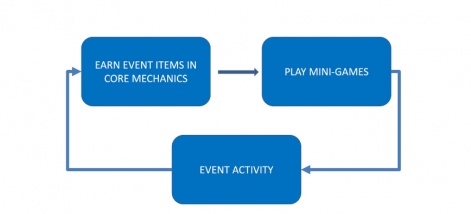
Players accumulate event items by engaging in the core gameplay mechanics, such as completing match-3 levels, spinning slot machines, or rolling dice in casino games. These event items are then utilised to participate in a mini-game. Participation in this mini-game earns players a specific event currency as a reward. Then, the player performs the main action of the event for event currency. Each event has stages. Most often, the player receives rewards for completing each stage of the event and a grand prize for finishing the event.
Let's compare the structure of events in all six games by their main components.
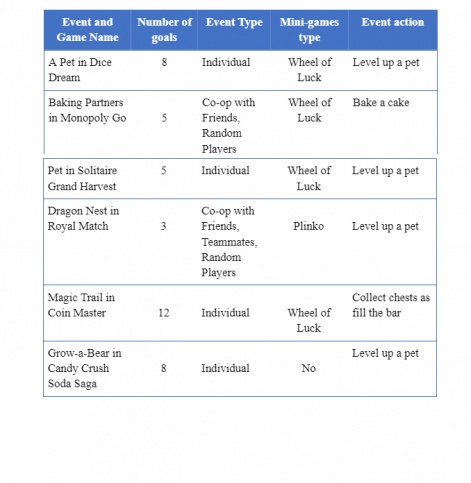
Source: Playliner
In four games, events are solo challenges where the player is responsible for completing all tasks independently. However, players work together in two games to meet shared objectives in pairs for cooperative events. As we see in the first table, among the games that adopted the original event, the co-op events in Monopoly GO and Royal Match generated the most revenue.
The types of mini-games players encounter can differ. Among the mentioned games, the "Wheel of Luck" mini-game is the most common, featured in 4 out of 6 events. Royal Match incorporates the Plinko mini-game, while Candy Crush Soda Saga takes a different approach by not offering a mini-game.
A recurring theme in four of the games is pet levelling. The primary goal in these events is to level up a pet by feeding it, with each level requiring a certain amount of food. Monopoly GO adds variety by requiring players to undertake diverse tasks during its event, such as baking a pie, completing a car, creating a gift, and tending to plants, making the gameplay more engaging and varied.
Benefits of hosting this event
- Boosting player engagement
This event can significantly boost player motivation and involvement. It's designed to keep players engaged with the main gameplay and draw them into various other activities and features of the game. The event encourages players to perform a wide range of actions. However, it cleverly delays the reward, making players earn it through intermediate items and multiple event stages. Adding a time limit increases both the frequency and length of gaming sessions.
- Enhancing monetisation
Monetisation primarily occurs when players buy spins, dice, additional moves, boosters, and similar items to obtain event-specific items within the main gameplay. In three out of six cases, games offer another revenue stream through special offers and bundles that also provide event items. This dual approach helps in monetising player activities effectively.
Scopley was the first company to adapt this event in their game, Monopoly GO. The initial implementation of the event in the game allowed for a 67% increase in revenue, the average number of sessions during the event increased by 52%, and the average duration of player engagement in the game per day increased by 58%. Each repetition of the event leads to an increase in game revenue.
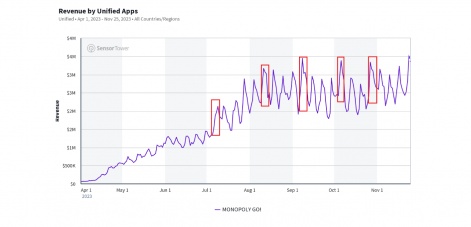
The event underwent significant revisions, leading to remarkable success:
- The transition to a cooperative (co-op) event model from the individual format previously seen in Dice Dreams was a pivotal change. This shift attracted new users and laid the groundwork for future retargeting efforts. By enabling players to invite their friends through Facebook login, the game expanded its community and utilised player data to re-engage users and encourage their return effectively.
- The event's structure was designed with four main objectives, each comprising five stages requiring collaboration with four friends. This approach ensured players received incremental rewards at each stage, culminating in a significant prize upon completing all objectives. This design fostered a sense of progression and achievement.
- Enhancing player engagement was a major focus. By integrating social interactions, the event significantly boosted player engagement and retention. Players were incentivised to participate in various game events and features to collect event items. Additionally, offering event items as a daily bonus in the game store effectively highlighted daily offers, keeping players intrigued and engaged.
These strategic changes were instrumental in maximising player participation in the event, demonstrating the effectiveness of fostering community and collaboration within the game environment.
A similar event was introduced into the game Royal Match. The “Dragon Nest” event was launched for Christmas and New Year.
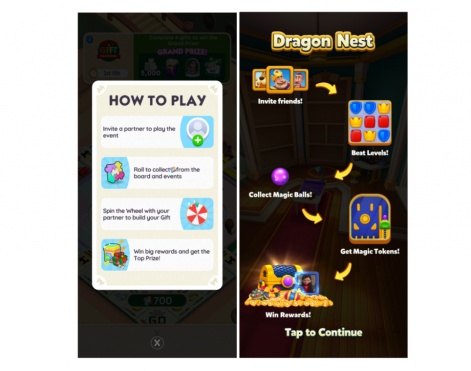
During the event period from December 22nd to 31st, the game's revenue saw a 17.1% increase. This uptick was not solely the result of the event; various holiday activities within the game also played a significant role in boosting revenue.
Let's take a closer look at a similar event that took place in December in Monopoly GO and Royal Match to identify the reasons and factors that contribute to the success of an event in a game.
1. Understanding the event audience
The potential audience size, player types, their numbers, and where they are in the game's life cycle are shaped by when an event is made available. Key factors like unlocking conditions and the length of the event play significant roles here. For instance, Royal Match requires players to invest significantly more time to access the event than Monopoly GO, which is readily available to all players, including those new to the game. This accessibility difference means Monopoly GO tends to attract a broader audience, leveraging organic growth and drawing in new, active, and loyal players. Monopoly GO December event lasts for five days, while Royal Match stretches to 10 days, with the required completion times being 8.5 and 6 hours, respectively.
2. Acquiring event currency
The way players can earn event currency sheds light on the event's focus and goals and how the developers aim to meet these goals. Monopoly GO encourages broad participation by offering a variety of activities, with a significant portion of event items gained from daily tasks and event participation. In contrast, Royal Match leans heavily on concurrent events for 80% of its event items.
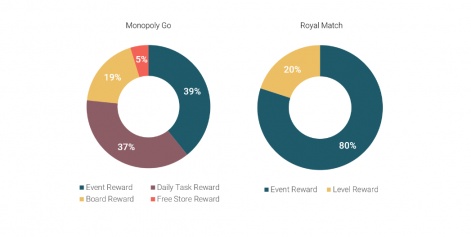
3. The power of rewards
Rewards are vital for engaging and motivating players to see an event through to the end. In Royal Match, rewards are limited to boosters and in-game currency, whereas Monopoly GO ups the ante with sticker packs, unique tokens, and emojis on top of the standard dice and in-game currency. The reward value in Monopoly GO far exceeds that in Royal Match, providing a much stronger incentive for player participation and completion.
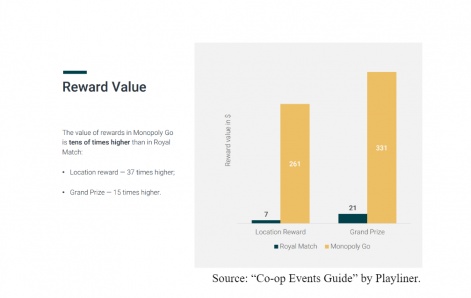
Source: “Co-op Events Guide” by Playliner.
Edited by Paige Cook

